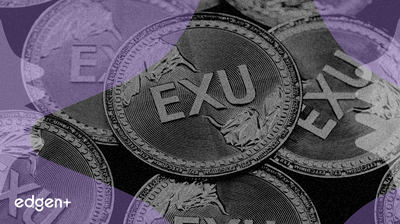 Report
Report
No Data Yet

## The Event in Detail: A Compressed Data Calendar Following a 43-day federal government shutdown that disrupted reporting schedules, financial markets are bracing for a condensed release of critical U.S. economic data. The backlog forces the release of multiple high-impact reports in a short window, increasing the potential for sharp market repricing. The Bureau of Labor Statistics (BLS) and Census Bureau have rescheduled key releases for the week of December 15-19, 2025: * **November 2025 Employment Situation:** Rescheduled for Tuesday, December 16. The BLS has stated it will not publish a report for October, and some data collection for the November report may be incomplete, creating a significant analytical gap for labor market assessment. * **November 2025 Consumer Price Index (CPI):** Scheduled for Thursday, December 18. Similar to the jobs report, the BLS will not publish an all-items CPI for October, and month-over-month comparisons will be affected. * **Retail Sales Data:** Delayed reports for October and September are also due on Tuesday, December 16, offering a crucial look at consumer health. This data dump occurs alongside a major derivatives expiration event, known as **triple witching**, on Friday, December 19, a setup that often amplifies volatility. ## Deconstruct the Financial Mechanics: The Fed's "Hawkish Cut" At its December 9-10 meeting, the **Federal Reserve** lowered the federal funds rate by 0.25 percentage points to a target range of 3.50% to 3.75%. However, the policy move was accompanied by a cautious, or "hawkish," message. Chair Jerome Powell highlighted that inflation risks remain tilted to the upside while employment risks are tilted to the downside. The decision was not unanimous, with dissents indicating disagreement over the necessity of a cut while inflation remains a concern and timely data was unavailable. This internal split suggests a higher bar for future rate reductions, shifting market focus to a meeting-by-meeting dependency on incoming data rather than a sustained easing path. ## Market Implications: Tech Fragility and Sector Rotation The market enters this pivotal week with signs of leadership fragility. The tech-heavy **Nasdaq** fell 1.6% in the prior week, while the **Dow Jones Industrial Average** gained 1.0% and the small-cap **Russell 2000** rose 1.2%. This divergence reflects a rotation away from mega-cap growth stocks and into more value-oriented, cyclical sectors. This shift was exacerbated by earnings reports from AI bellwethers that raised concerns about the sustainability of the AI investment boom: * **Oracle (ORCL):** The company's stock fell sharply after its forecasts and soaring capital expenditures fueled worries that AI infrastructure spending is not translating quickly enough into profitability. * **Broadcom (AVGO):** Shares dropped after the company warned that rising sales of lower-margin custom AI processors would squeeze profitability, challenging the narrative that all AI-related revenue is high-quality. With the **S&P 500** trading at approximately 22 times forward earnings—well above its historical average—the market is displaying heightened sensitivity to valuation risk, particularly in the tech sector. Fund flows confirm this rotation, with U.S. equity funds seeing inflows directed toward sectors like metals & mining, industrials, and healthcare. ## Broader Context: Navigating Uncertainty into Year-End The confluence of a compressed data schedule, a divided Fed, and a wavering technology sector creates a complex environment. The upcoming earnings report from **Micron Technology (MU)** will be a significant focal point, providing a direct read-through on the memory and storage component costs that have reportedly led companies like **Dell (DELL)** to plan price increases for commercial PCs. Strategists at firms including Bank of America and Morgan Stanley have advised clients to look beyond the "Magnificent Seven" for growth in 2026, favoring sectors like healthcare and industrials. The performance of these lagging groups versus the high-flying tech names in response to next week's data will provide a critical test of whether this rotation has durability into the new year.

## Executive Summary Quantum Computing Inc. (NASDAQ: **QUBT**) shares surged 9.73% to close at $12.07, driven by investor bargain-hunting after a 30% price fall in the prior month. This rebound occurs amid a broader market rotation out of high-valuation Artificial Intelligence (AI) stocks and into undervalued sectors. While the quantum computing industry remains in a nascent stage, the move signals that investors are seeking opportunities in adjacent high-technology fields, even as the speculative fervor around AI moderates. ## The Event in Detail Over the past two trading sessions, **QUBT** has experienced a significant rally, culminating in a 9.73% gain to end the day at $12.07. The rally is a direct reaction to the stock's poor performance last month, where it saw its valuation decline by approximately 30%. This sharp drop created a buying opportunity for investors who perceive the stock as undervalued, leading to the current bargain-hunting activity. The price action is not based on a specific company announcement but rather on technical market dynamics and shifting sentiment. ## Market Implications The rally in **QUBT** is indicative of a broader "rotation trade" currently underway in the market. As noted by market strategists, investors are beginning to take profits from AI-linked stocks, such as **Nvidia** (NASDAQ: **NVDA**) and **AMD** (NASDAQ: **AMD**), which have seen powerful, multi-year runs. This capital is now flowing into sectors and companies that have been "left behind" and are perceived to have more attractive valuations. The recent interest-rate cut by the Federal Reserve has bolstered confidence in the U.S. economy, encouraging investors to broaden their exposure beyond the handful of mega-cap tech stocks that have dominated market gains. ## Expert Commentary Market analysis from BNY's head of markets macro strategy, Bob Savage, supports this view. He noted that "the recession fears that dominated last year have given way to a broad consensus of economic resilience." This improved economic outlook makes investors more willing to invest in cyclical and value-oriented assets. While no analysts have commented directly on **QUBT**'s recent jump, the broader commentary on the quantum computing sector highlights its speculative but promising nature. For instance, The Motley Fool recently contrasted **D-Wave Quantum**'s (NYSE: **QBTS**) near-term commercialization progress with **Rigetti Computing**'s (NASDAQ: **RGTI**) more long-term, speculative approach. This divergence underscores the varied strategies within the quantum sector, where **D-Wave** reported 100% year-over-year revenue growth in Q3, while **Rigetti** saw an 18% decline. ## Broader Context The move into **QUBT** can be seen as a search for the "next big thing" as the AI trade becomes crowded and faces valuation scrutiny. The quantum computing industry, while years away from maturity, represents a parallel frontier in advanced computation. The immense capital expenditure projected for the AI data-center build-out, estimated to approach $1 trillion over the coming years, demonstrates the scale of investment flowing into next-generation computing infrastructure. While quantum computing is distinct from AI, the appetite for transformative technologies remains high. **QUBT**'s rebound, therefore, serves as a small-scale example of how investors are repositioning portfolios to capture long-term growth in a market that is expanding its focus beyond a narrow group of AI winners.

## Executive Summary Quantum Computing Inc.'s (QCi) announcement of its debut at CES 2026 marks a strategic push toward demonstrating commercial applications for its quantum photonics technology. This move reflects a broader industry pivot from theoretical research to tangible use cases, occurring as the nascent quantum sector explores divergent paths to market viability. The immense capital expenditure and supply-chain constraints observed in the adjacent artificial intelligence (AI) infrastructure boom, exemplified by firms like **Oracle**, serve as a critical case study for the financial and logistical hurdles the quantum industry will face in its pursuit of scale. ## The Event in Detail At CES 2026 in Las Vegas, **Quantum Computing Inc.** intends to conduct live demonstrations showcasing its quantum photonics platform. The company will focus on applications with clear commercial potential, including the optimization of financial market outcomes, enhancement of AI model training efficiency, and complex logistical route optimization. This public exhibition is designed to signal to investors and potential enterprise clients that its technology has progressed to a stage of practical utility, moving beyond the confines of the laboratory. ## Market Implications QCi's focus on commercial demonstration places it within a competitive landscape characterized by varied strategic timelines. The quantum sector currently exhibits two primary approaches. One, exemplified by **D-Wave Quantum (QBTS)**, prioritizes near-term commercialization through technologies like quantum annealing. This strategy has yielded measurable results, with **D-Wave** reporting a 100% year-over-year revenue increase to $3.7 million in its most recent quarter. The alternative approach, adopted by firms like **Rigetti Computing (RGTI)**, focuses on developing more speculative, potentially higher-impact technologies for the long term. This path carries greater uncertainty, as reflected in **Rigetti's** 18% year-over-year revenue decline to $1.95 million in the same period. QCi's planned showcase positions it as aspiring to the former camp, aiming to prove its near-term revenue-generating potential. ## Expert Commentary Industry analysts view the development of quantum computing as a double-edged sword, offering transformative potential while presenting significant challenges. Experts note its capacity to "revolutionize medicine, enhance diagnostics, and accelerate innovative drug discovery," while simultaneously cautioning that it could "infiltrate current data encryption models," posing a systemic risk to data security. The path to building out quantum infrastructure is also fraught with physical and financial limitations, mirroring the current struggles in the AI sector. Jonathan Koomey, a data-center researcher, highlights this friction: > "The world of bits moves fast. The world of atoms doesn’t. And data centers are where those two worlds collide." This sentiment underscores the long lead times for specialized hardware and construction, a reality that will likely temper the pace of quantum development regardless of investment levels. ## Broader Context The financial reality of building next-generation computing infrastructure provides a sobering context for the quantum industry's ambitions. **Oracle's (ORCL)** recent market performance offers a compelling case study. The company's commitment to building AI data centers, largely for a single client, resulted in capital expenditures of $12 billion in one quarter and has expanded its total debt to approximately $100 billion. This aggressive, debt-fueled strategy has unsettled investors, causing its bond yields to rise and highlighting market sensitivity to high-risk capital outlays. While other hyperscalers such as **Google (GOOG)**, **Meta (META)**, and **Amazon (AMZN)** are also issuing billions in bonds to fund AI expansion, their stronger cash positions and higher credit ratings provide a more stable foundation. The quantum industry, still in its infancy, will inevitably face similar capital demands for its own specialized data centers. The challenges faced by established tech giants like **Oracle** suggest that the road to scalable quantum computing will be defined as much by disciplined financial strategy and supply-chain management as by technological breakthroughs.

## Executive Summary Jim Cramer has publicly stated a cautious position on Airbnb (ABNB), advising that he is not willing to "stick his neck out" for the stock at this moment. This sentiment comes despite acknowledging the company's potential and noting its 15% recovery from recent lows. The popular market commentator described the stock as "frustrating," suggesting that its current price point presents an uncertain risk/reward profile for new investors. ## The Event in Detail During a segment on CNBC, Jim Cramer analyzed Airbnb's recent stock performance and market position. He highlighted that while the company remains a significant player in the travel and hospitality industry, its stock has been a source of frustration. The core of his message was a warning against aggressive buying at the current levels. Even with a 15% appreciation from its bottom, Cramer's commentary indicates that the stock has not yet demonstrated the momentum or stability required for a strong bullish recommendation from him. ## Market Implications Cramer's public statements can carry significant weight in the retail investment community. A neutral or cautious call from a high-profile analyst like Cramer can temper investor enthusiasm and may lead to increased price stagnation or limited upside in the short term. While not a direct sell signal, his hesitation introduces uncertainty, potentially causing prospective buyers to pause and existing investors to reconsider their positions. This type of commentary can contribute to a stock trading within a range, as the market digests the mixed signals of a solid underlying business model versus a challenging stock valuation. ## Expert Commentary > "I Don’t Feel Like Sticking My Neck Out at This Very Moment.” - Jim Cramer on CNBC This quote encapsulates the core of the expert analysis provided. Cramer is not bearish on the fundamental business of **Airbnb**, but he is signaling a clear lack of conviction in the stock's short-term appreciation potential. His use of the word "frustrating" points to a disconnect between the company's operational performance and its behavior as a traded security, a common theme among high-growth, high-valuation technology stocks. ## Broader Context The current market environment is characterized by a rotation and re-evaluation of technology and growth stocks. Companies like **Broadcom (AVGO)** and **Oracle (ORCL)** have recently seen significant price drops following earnings calls, fueling broader concerns about tech valuations. While the AI sector, led by companies like **Nvidia (NVDA)**, continues to be a focus, there is an ongoing debate about whether the multi-year run has pushed valuations to unsustainable levels. Cramer's cautious stance on **Airbnb** aligns with this wider market sentiment of increased sensitivity to valuation and a more critical assessment of near-term growth prospects.

## Executive Summary Former President Trump's proposed "run it hot" economic strategy is fueling a divergence in market expectations. Analysts project the policy mix of fiscal stimulus and potential deregulation could extend the rally in equities, while simultaneously exerting significant pressure on bond valuations due to inflation and deficit risks. ## The Event in Detail A potential Trump administration is expected to pursue a "run it hot" economic agenda, characterized by significant fiscal stimulus aimed at accelerating growth. This strategy, as outlined by market analysts, implies a tolerance for, or active encouragement of, faster inflation and rising government deficits. This approach would be coupled with a Federal Reserve that has already embarked on a path of monetary easing. The Fed executed its third interest-rate cut for the year on December 10, lowering the federal funds target range to 3.50%-3.75%. Furthermore, the central bank's ongoing Treasury bill purchases are viewed by many market participants as a form of quantitative easing, which is projected to keep market yields suppressed into the first half of 2026. This combination of expansionary fiscal policy and accommodative monetary policy sets the stage for a unique economic environment. ## Market Implications The primary market consequence is an anticipated "great sector rotation" within the equity market. Strategists at major firms like **Bank of America** and **Morgan Stanley** are advising clients to shift capital away from the high-valuation **"Magnificent Seven"** technology stocks, which have led the bull market for three years. Instead, capital is expected to flow into more cyclical, "old school" sectors. * **Equities:** Industrials, energy, financials, and consumer discretionary stocks are forecast to outperform. These "Main Street" sectors are considered better positioned to benefit from a general economic upswing and a higher inflation regime. Data already indicates a shift, with the small-cap **Russell 2000 Index** outgaining a gauge of Magnificent Seven stocks by nearly double since late November. * **Bonds:** The outlook for the bond market is decidedly negative. A "run it hot" strategy inherently leads to faster price increases and greater government borrowing to fund deficits. This scenario points toward higher inflation expectations and an increased supply of government debt, both of which would force Treasury yields higher and, consequently, bond prices lower. ## Expert Commentary Wall Street analysis has coalesced around this rotational theme. **Michael Hartnett** of Bank of America stated that markets are front-running the "run-it-hot" strategy by rotating into mid-cap, small-cap, and micro-cap stocks. Similarly, **Michael Wilson**, Chief U.S. Equity Strategist at Morgan Stanley, noted that while Big Tech can still perform, it is expected to lag behind areas like consumer discretionary goods and small- and mid-caps, which are favored in an "early-cycle backdrop." **Craig Johnson** at Piper Sandler & Co. observed the trend directly, stating, "I’m hearing about people taking money out of the Magnificent Seven trade, and they’re going elsewhere in the market... they’re not just going to be chasing the **Microsofts** and **Amazons** anymore." ## Broader Context The proposed fiscal path introduces significant complexity for the **Federal Reserve**. The central bank must navigate its dual mandate of controlling inflation and maintaining full employment in an environment where fiscal policy is actively inflationary. This dynamic is further complicated by the impending departure of Fed Chair **Jerome Powell** in May 2026 and the political tensions surrounding the nomination of his successor. President Trump has publicly criticized the Fed for not cutting rates more aggressively and has signaled a desire for a chair who would favor a low-interest-rate policy. This has raised concerns among investors about the future independence of the central bank. Any perceived politicization of monetary policy could inject further volatility into markets, particularly for bonds, as the Fed's credibility in fighting inflation would be tested.

## Executive Summary A significant market rotation is underway, with capital flowing from megacap technology stocks to cyclical and "old-economy" sectors. This strategic shift is predicated on investor expectations of a "run-it-hot" economic policy and continued monetary accommodation from the Federal Reserve. However, the move is concurrent with signals of a potential pause in rate cuts from an internally divided Fed and mounting political uncertainty over its leadership, creating a complex and data-sensitive market environment. ## The Event in Detail Multiple top-tier Wall Street firms, including **Bank of America** and **Morgan Stanley**, are now advising clients to look beyond the "Magnificent Seven" for growth in 2026. They advocate for a rotation into sectors such as industrials, energy, and health care. This sentiment is backed by market performance, where the small-cap **Russell 2000 Index** has gained 11% since late November, outpacing the approximate 5.5% advance from a gauge of megacap tech firms. Further, the **S&P 500 Equal Weight Index** is outperforming its market-cap-weighted counterpart, signaling a broadening of market participation. The shift coincides with the **Federal Reserve's** decision on December 10 to cut its benchmark rate by 25 basis points to a target range of 3.50%-3.75%. Despite the third cut this year, the Federal Open Market Committee (FOMC) remains fractured. The 9-3 vote included dissents and official statements revealing a deep debate on the path forward. Economic signals are mixed, with September's PCE inflation at 2.79%—still well above the Fed's 2% target—and a September unemployment rate of 4.4%. More recent data shows initial unemployment claims rose by 44,000 to 236,000 for the week ending December 6, and Fed Chair **Jerome Powell** acknowledged that government statistics might be overestimating job creation by as much as 60,000 jobs per month. ## Market Implications The rotation from technology leaders to cyclical stocks represents a fundamental shift in market strategy. Investors are moving away from a market driven by a handful of high-growth tech behemoths toward a broader rally based on anticipated economic acceleration. A "run-it-hot" policy, which would tolerate higher inflation to fuel growth, disproportionately benefits cyclical stocks whose fortunes are tied to the economic cycle. Conversely, this environment is a headwind for bonds and other long-duration assets, as inflation erodes the value of their fixed-income streams. The **U.S. 10-year Treasury** yield currently stands at 4.1940%, a level markets perceive the Fed is actively managing. This strategic pivot is also supported by forward-looking earnings data. According to **Goldman Sachs**, earnings growth for the S&P 493 (the S&P 500 excluding the seven largest companies) is projected to accelerate to 9% in 2026, up from 7% this year. Over the same period, the earnings contribution from the seven largest firms is forecast to fall from 50% to 46%. ## Expert Commentary Leading market strategists are largely aligned on the rotation theme, though their reasoning varies. > **Michael Hartnett**, Bank of America: Argues that markets are front-running a "run-it-hot" strategy for 2026, rotating from "Wall Street megacaps" into "Main Street" mid-caps, small-caps, and micro-caps. > **Michael Wilson**, Morgan Stanley: Believes the economy has entered an "early-cycle backdrop" after troughing in April, a condition that typically serves as a "boon for laggards" like lower-quality financials and industrials. > **Ed Yardeni**, Yardeni Research: Has shifted his firm's long-standing overweight recommendation on information technology, now advising an underweight position versus the rest of the S&P 500. The debate extends inside the Federal Reserve. **Chicago Fed President Austan Goolsbee**, who dissented against the latest cut, nevertheless stated he expects rates "can come down a significant amount over the next year." In contrast, **Cleveland Fed President Beth Hammack**, who will be a voting FOMC member in 2026, stated she would "prefer to be on a slightly more restrictive stance" to combat inflation. ## Broader Context The Federal Reserve's policy direction is further clouded by a shifting political landscape. With Chair **Jerome Powell's** term ending in May, President Trump is expected to nominate a successor, raising concerns about the central bank's independence. White House National Economic Council Director **Kevin Hassett** is reported to be a frontrunner. Critics, including **Senator Elizabeth Warren**, have voiced concerns that the administration is seeking a nominee who will prioritize political demands over data-driven monetary policy. This political pressure converges with the "run-it-hot" economic narrative, creating a potential clash with the Fed's dual mandate of price stability and maximum employment. While the rotation into cyclical assets is factually underway, its durability will be tested by the interplay of incoming economic data, the Fed's policy response to its internal divisions, and the resolution of the political questions surrounding its future leadership.

## Executive Summary Hedge funds are expanding their operations into physical commodity markets, including natural gas, crude oil, and electricity. The primary objective is not to become asset operators but to secure an "information advantage" for financial trading. By engaging directly with physical supply chains, these firms aim to capture real-time, granular data on supply and demand fundamentals, creating an informational edge—or **information alpha**—that is not reflected in traditional financial market data or derivatives. ## The Event in Detail The strategy involves taking direct physical positions in commodities to understand market nuances that are invisible to purely financial players. This approach allows funds to analyze logistical bottlenecks, storage levels, and real-time consumption patterns, which are leading indicators of price movements. A clear case study is the **uranium** market. Throughout 2025, uranium **spot prices** have shown significant volatility, with a 28.8% corridor between the March low of $64.23 per pound and the September peak of $82.63. By November, the spot price had settled to $75.80. In stark contrast, **long-term contracts**, where the majority of utility procurement occurs, remained exceptionally stable at $80.00-$81.00 per pound. This consistent $4-$6 premium over recent spot prices indicates that participants with physical market exposure have a different, more stable long-term valuation, creating a distinct arbitrage opportunity for funds with superior market intelligence. ## Market Implications The infusion of financially-driven players into physical markets blurs the lines between traditional commodity traders and hedge funds. This could lead to increased sophistication in hedging strategies but also introduces the risk of heightened volatility if large financial positions are unwound quickly. This trend signals a broader market recognition that traditional financial instruments are imperfect proxies for their underlying assets. By seeking a physical foothold, funds are effectively internalizing the data collection process to de-risk their financial bets and generate alpha from proprietary insights. ## Expert Commentary This strategic pivot is underpinned by the documented failure of many financial instruments to accurately track physical commodity performance. Analysis shows that mining equities, often sold as leveraged plays on commodities, are a prime example. > Historical data since August 1971 reveals that physical gold has outperformed the Barron's Gold Mining Index by a factor of 6.5x. While gold saw a cumulative gain of 9,755%, the index of premier mining companies rose only 550%. Experts attribute this massive underperformance to structural factors within mining companies, such as shareholder dilution from constant capital raises and the elasticity of operational costs (e.g., energy, labor), which rise in tandem with commodity prices, eroding the theoretical leverage. ## Broader Context This move into physical assets is part of a larger trend where sophisticated investors are seeking more direct, risk-managed exposure to asset classes. It parallels actions in the public markets, such as **Goldman Sachs**' recent acquisition of **Innovator Capital Management**, a specialist in "buffer ETFs" that use options for downside protection. Both strategies demonstrate a demand for investment vehicles that offer a more controlled and data-verified way to navigate volatile markets. As investors rotate out of crowded trades like **AI stocks** and into value-oriented and cyclical sectors, the appeal of tangible assets and the proprietary data they yield is expected to grow. This represents a back-to-basics approach, where the ultimate competitive advantage is a superior understanding of an asset's fundamental, real-world value chain.

## The Event in Detail **OpenAI** has removed its six-month equity "vesting cliff" for all new employees, a significant modification to its compensation strategy. The policy, announced internally by Applications Chief **Fidji Simo**, means that new hires will begin to vest their equity grants immediately upon starting. This change eliminates the standard waiting period where an employee must remain with the company for a set duration—in this case, six months—before any portion of their promised equity is officially granted. This decision follows a previous policy update in April when **OpenAI** shortened the cliff from the industry-standard 12 months to six, indicating a rapid strategic adjustment to market pressures. ## Financial Mechanics of the Talent War A vesting cliff is a financial control mechanism designed to promote employee retention and mitigate the costs associated with high turnover. By removing it, **OpenAI** increases its immediate financial exposure to new hires but gains a substantial competitive edge in its compensation packages. This tactic makes its offers more appealing upfront, a direct response to the escalating "talent war" in the Artificial Intelligence sector. The move contrasts with the strategies of competitors. **Meta** has pursued a strategy centered on large cash incentives, reportedly offering signing bonuses as high as $100 million and total compensation packages reaching $250 million for top-tier researchers. Another costly method of talent acquisition is the "acqui-hire," exemplified by **Meta's** $14.3 billion investment in **Scale AI** and **Google's** $2.4 billion deal to absorb the leadership of **Windsurf**, an AI coding platform. ## Market Implications **OpenAI's** policy change directly intensifies the competition for a limited pool of elite AI professionals. It sets a new, more employee-friendly precedent that puts pressure on other technology firms, including publicly traded giants like **Microsoft** and **Google**, to re-evaluate their own compensation structures. Should this trend become widespread, it could lead to a notable increase in stock-based compensation expenses across the industry, carrying the potential to impact corporate profit margins and shareholder returns. The fact that **Elon Musk's xAI** recently enacted a similar policy change suggests that this aggressive approach to equity vesting is becoming a key battleground for top-tier, private AI labs. ## Expert Commentary The strategic divergence in talent acquisition is sharp. **Microsoft AI** CEO, Mustafa Suleyman, has publicly stated he will not attempt to match **Meta's** compensation levels. > "I think that Zuck’s taken a particular approach that involves sort of hiring a lot of individuals rather than maybe creating a team, and I don't really think that's the right approach," Suleyman remarked on a Bloomberg podcast. Meanwhile, the systemic importance of **OpenAI** is a source of concern for some analysts. Daleep Singh, former deputy national security advisor and current Head of Global Macroeconomic Research at PGIM, noted the potential for financial contagion if **OpenAI** were to falter. He stated, "the foundations for the entire [AI] sector become fragile," warning of a "multiplier on **OpenAI** failure that would cascade through the ecosystem." ## Broader Context and Systemic Risk **OpenAI** is no longer just a research lab; it has become a cornerstone of the modern AI economy. Its operational stability and growth trajectory have a direct impact on market sentiment and the capital expenditure plans of major corporations. A significant downturn in **OpenAI's** business could trigger a sharp reduction in chip orders, directly impacting the valuation and revenue forecasts of companies like **NVIDIA**. As noted by Daleep Singh, this creates a domino effect: a drop in chip demand devalues the collateral underpinning billions of dollars in loans, creating systemic financial risk. This central role has fueled debate over whether the company is "too big to fail." The discussion was amplified after a suggestion of a federal backstop was attributed to **OpenAI's** CFO, Sarah Friar. However, CEO **Sam Altman** has firmly rejected this notion, stating, "If we screw up and can't fix it, we should fail... That's how capitalism works and the ecosystem and economy would be fine."

## Executive Summary The U.S. Federal Reserve's latest 25-basis-point interest rate cut has exposed a significant rift among policymakers and amplified concerns that a richly valued stock market, rather than a slowing economy, poses the primary risk of a future recession. While the cut was intended to support a cooling labor market, it comes as equity valuations, driven by an artificial intelligence boom, have reached historic highs. Analysts at **BCA Research** have warned that the large cohort of "excess retirees" makes the U.S. economy uniquely vulnerable to a market downturn, creating a difficult policy dilemma for the central bank as it balances inflation control against financial stability. ## The Event in Detail The Federal Open Market Committee (FOMC) concluded its December meeting by lowering the federal funds rate to a target range of **3.50% to 3.75%**. The decision was not unanimous, passing with a **9-3 vote** that signals growing internal disagreement. Dissenting members expressed concerns over cutting rates while inflation remains above the Fed's **2% target**. Data supporting the decision pointed to a weakening labor market. Initial unemployment claims for the week ending December 6 saw their largest increase since March 2020. Furthermore, Fed Chair **Jerome Powell** acknowledged that government statistics could be overstating job creation by as much as 60,000 jobs per month for 2025. This backdrop complicates the Fed's dual mandate, forcing it to weigh easing to support employment against the risk of reigniting inflation. ## Market Implications Equity markets are exhibiting signs of significant over-extension. The **S&P 500 Shiller CAPE ratio**, an inflation-adjusted valuation measure, recently touched 39—a level surpassed only during the dot-com bubble of the late 1990s. This rally has been heavily concentrated in technology stocks like **Nvidia** and **Alphabet**, fueled by optimism around AI. This high-valuation environment makes the market particularly susceptible to the scenario outlined by **BCA Research**, where a significant correction could trigger a recession. The mechanism is a negative wealth effect on a large demographic of retirees whose consumption is more closely tied to their investment portfolios than ever before. This inverts the traditional sequence where a recession precedes a market crash. ## Expert Commentary The division within the Fed is increasingly public. **Chicago Fed President Austan Goolsbee**, despite dissenting on the December cut, stated he anticipates that rates "can come down a significant amount over the next year." In contrast, **Cleveland Fed President Beth Hammack**, who will be a voting FOMC member in 2026, has advocated for a "slightly more restrictive stance" to ensure inflation returns to target. Adding to the hawkish perspective, former Council of Economic Advisers chair **Glenn Hubbard** has questioned the fundamental case for further rate cuts while the economy is still projected to grow. ## Broader Context The Fed's policy path is clouded by significant political uncertainty. Chair **Jerome Powell**'s term is set to end in May, and President Trump has publicly signaled his desire to appoint a successor who will pursue more aggressive rate cuts. This has raised concerns among investors regarding the future independence of the central bank, a cornerstone of global market confidence. Meanwhile, policy divergence is becoming more pronounced globally. The **Bank of Canada**, for example, recently held its policy rate steady at **2.25%**, citing stronger-than-expected GDP growth and an improving labor market. This transatlantic split in monetary policy highlights the unique pressures and risks facing the U.S. economy as it navigates the twin challenges of high inflation and precarious market heights.

## Executive Summary The S&P 500 index achieved a new record high, surpassing the 6,900 level, propelled by a sustained, AI-driven rally in technology stocks. This milestone marks the index's third consecutive year of double-digit percentage gains. However, this bullish momentum is now met with significant headwinds. Valuations have reached historically elevated levels, with the Shiller CAPE ratio hitting 39, a metric only previously seen during the dot-com bubble. Concurrently, the Federal Reserve executed a "hawkish" rate cut, signaling a cautious outlook. These factors are fueling a market rotation away from mega-cap tech leaders and into cyclical sectors. Investor attention is now intensely focused on a compressed schedule of delayed U.S. economic data releases for November, which are expected to dictate near-term market direction. ## The Event in Detail This week, the **S&P 500** index surpassed the 6,900 milestone for the first time, pushing its year-to-date gain to **16.34%**. This performance has been largely driven by outsized returns in a handful of AI-focused technology companies, including **Nvidia** and **Alphabet**. In contrast, the **S&P Equal Weight** index is up a more modest **10.42%** year-to-date, highlighting the narrow leadership of the rally. The market's ascent was further supported by the Federal Reserve's decision on December 10 to lower the federal funds rate by **0.25 percentage points** to a target range of **3.50%–3.75%**. Despite the cut, the central bank's cautious commentary has tempered expectations for a sustained easing cycle. ## Market Implications Despite the record highs, underlying market dynamics suggest a shift in sentiment. The **S&P 500 Shiller CAPE ratio**, an inflation-adjusted valuation measure, now stands at 39. This is its second-highest level in over 150 years and indicates that equities are expensive relative to historical earnings. On a forward-looking basis, the index is trading at approximately **22 times expected earnings**, well above its 10-year average. This high-valuation environment is contributing to a sector rotation. Since late November, the small-cap **Russell 2000 Index** has gained **11%**, significantly outperforming the mega-cap technology gauge. Recent fund flow data confirms this trend, showing a **$3.3 billion** weekly inflow into U.S. equity funds, with new capital favoring cyclical sectors such as **metals & mining**, **industrials**, and **healthcare**. The rotation was accelerated by disappointing forecasts from AI bellwethers **Oracle** and **Broadcom**, which raised concerns about the profitability of high capital expenditures in the AI sector. ## Expert Commentary Wall Street strategists are increasingly advising clients to diversify away from the so-called "Magnificent Seven" technology stocks. Michael Wilson, Chief U.S. Equity Strategist at **Morgan Stanley**, noted the market may be entering an "early-cycle backdrop" that typically benefits cyclical laggards. Similarly, Jason De Sena Trennert, Chairman of **Strategas Asset Management**, anticipates a "great sector rotation" into financials and consumer discretionary stocks in 2026. Supporting this view, Ed Yardeni of **Yardeni Research**, who has been overweight technology since 2010, recently recommended an underweight position, anticipating a broadening of profit growth across the market. According to data from **Goldman Sachs Group Inc.**, earnings growth for the S&P 500 excluding its seven largest companies is projected to accelerate to **9%** in 2026. ## Broader Context The market is navigating a complex macroeconomic landscape. The Federal Reserve characterized its recent rate cut as "hawkish," with officials expressing that inflation risks remain tilted to the upside while employment risks are tilted to the downside. The vote revealed significant dissent, raising the bar for future rate cuts. A primary source of near-term uncertainty stems from a 43-day federal government shutdown that delayed major economic reports. Consequently, the **November Employment Situation**, **Retail Sales**, and **Consumer Price Index (CPI)** are all scheduled for release in a compressed window between December 16 and 18. The **Bureau of Labor Statistics** has advised that October data for both jobs and CPI will not be published, creating analytical challenges. This data dump will occur just before the December 19 "triple witching" derivatives expiration, a period known for increased trading volume and potential volatility, which could amplify market reactions to the economic releases.

## Executive Summary Noted investor Michael Burry of **Scion Asset Management** has reportedly made a multimillion-dollar bet on gold, signaling a strategic pivot toward hard assets. This move is juxtaposed with his fund's substantial bearish positions on the artificial intelligence sector, including significant put options against **NVIDIA (NVDA)** and **Palantir (PLTR)**. The investment occurs amid a broader market environment increasingly favorable to precious metals, driven by expectations of renewed quantitative easing by the Federal Reserve, a weakening U.S. dollar, and significant geopolitical shifts, including the launch of a new gold-backed currency by the BRICS alliance. ## The Event in Detail While public 13F filings revealed that 66% of Scion's portfolio consisted of **Palantir** puts and 14% in **NVIDIA** puts, recent reports indicate Burry has now allocated significant capital to gold. This new position is not reflected in public disclosures, consistent with reports that Burry may be closing his fund to return capital and operate more privately. In an October letter, he stated his "estimation of value in securities is not now, and has not been for some time, in sync with the markets." This defensive posture against what he perceives as an "AI Bubble" is contrasted by long positions in companies such as **Halliburton**, **Pfizer**, and **Lululemon**, alongside the new strategic allocation to gold. ## Market Implications The timing of Burry's gold investment coincides with significant macroeconomic catalysts. The Federal Reserve has announced its intention to begin purchasing $40 billion of Treasury bills per month, a form of quantitative easing that is expected to create looser monetary conditions. This policy has already contributed to a decline in the U.S. dollar index to a six-week low. In response, gold futures have moved above $4,300, and silver has soared to fresh all-time highs above $64 per ounce. The move signals a flight to safety and a hedge against currency debasement, with precious metals emerging as a primary beneficiary of the Fed's policy pivot. ## Expert Commentary The pivot to precious metals is receiving validation from major financial institutions for the first time in decades. Mike Wilson, CIO at **Morgan Stanley**, recently advocated for a revised portfolio allocation of 60% stocks, 20% bonds, and 20% precious metals. Similarly, "Bond King" Jeff Gundlach has proposed a 25/25/25/25 portfolio split between stocks, bonds, precious metals, and cash. Michael Widmer, Head of Metals Research at Bank of America, noted that high-net-worth investors currently hold only 0.5% of their assets in gold. He stated that even a modest 14% increase in investment demand could be sufficient to push gold prices toward $5,000 per ounce. ## Broader Context The strategic case for gold is reinforced by structural changes in the global financial system. The **BRICS** alliance (Brazil, Russia, India, China, South Africa, and others) has launched "The Unit," a new currency partially backed by gold and settled via blockchain technology, operating entirely outside the U.S. dollar-based SWIFT system. This development represents a significant move toward de-dollarization. Furthermore, central bank bullion reserves recently surpassed their holdings of U.S. Treasuries, establishing gold as the preferred safe-haven asset. This trend is complemented by surging retail investment demand, particularly from markets like India, where pension funds are now permitted to invest up to 5% of their assets in gold and silver ETFs. These converging factors suggest a sustained and robust bull market for precious metals.

## Executive Summary Companies are navigating a volatile market with a clear strategic split. One path involves aggressive operational austerity, as exemplified by **Opendoor's** (**OPEN**) new cost-reduction strategy following a significant revenue downturn. The other path is a capital-intensive push into proprietary technology, with firms like **Rivian** (**RIVN**) investing heavily in in-house AI development to build a competitive moat. This bifurcation reflects a market where companies must either become hyper-efficient operators or technology leaders, with little room for error in between. ## The Event in Detail: A Tale of Two Turnarounds **Opendoor's** Q3 2025 results underscore the challenges in the real estate market, with revenue declining 34% year-over-year. In response, the new CEO has initiated a strategy centered on aggressive cost-cutting, inventory reduction, and shoring up the balance sheet with a $200 million equity raise. This is a classic, defensive turnaround playbook designed to achieve stability amid macroeconomic headwinds and potential shareholder dilution. In stark contrast, **Rivian** is pursuing an offensive, technology-driven strategy. The company announced a "clean-sheet approach" to its autonomous driving platform, which includes developing a custom **Rivian Autonomy Processor (RAP1)**. This move represents a strategic shift away from third-party suppliers like **Nvidia** (**NVDA**) and toward vertical integration. The market responded with strong approval, sending **RIVN** stock up 12.1% and prompting a price target increase from Needham to $23, a 64% jump. This strategy aims to create a long-term advantage through a proprietary "data flywheel," where vehicle data continuously improves the AI models. ## Market Implications: The Great Bifurcation The strategic divergence between austerity and AI investment is evident across the market. The AI boom is creating immense value for key suppliers, with **Broadcom** (**AVGO**) reporting record annual revenue of $64 billion and a $73 billion backlog for its AI components. This demonstrates a massive flow of capital toward companies enabling the AI revolution. Simultaneously, industries facing direct consumer and macroeconomic pressures are adopting defensive postures. In the foodservice sector, leaders are focusing on operational clarity, with widespread SKU consolidation and an emphasis on efficiency over complex innovation. Similarly, **Johnson Outdoors** (**JOUT**) managed to improve its operating loss from $43.5 million to $16.2 million despite flat revenue, attributing the gain to cost-saving initiatives. This trend is also reflected in private equity, where Q3 2025 transportation deal flow stalled due to uncertainty, even as investment in AI-driven trucking and logistics technology continued. ## Expert Commentary: In-Housing vs. Efficiency Wall Street has rewarded strategic boldness in AI. Commenting on **Rivian**, Needham analyst Chris Pierce noted the company "signaled a shift from an OEM adopting autonomy to one leveraging AI to build end-to-end autonomy." This underscores the perceived value of owning the entire technology stack. The broader principle is that AI is a transformative economic force. As Leroy Kerry, CEO of Filed, stated in the context of the accounting industry, AI allows companies to "fundamentally reshape the economics of the field" by moving professionals from routine tasks to strategic advisory roles. However, operational excellence remains a critical driver of success. Foodservice expert Kevin Wilson, CEO of Esrock Partners, argued for a return to fundamentals. > We’ve glamorized disruption, but what’s going to drive growth is operational clarity. This sentiment captures the strategy at **Opendoor** and **Johnson Outdoors**, where survival and future growth are predicated on streamlining operations in the face of market headwinds. ## Broader Context: The AI Flywheel and Corporate Strategy **Rivian's** plan to develop its own silicon and software is part of a larger trend of vertical integration pioneered by tech giants. By creating a custom processor like the RAP1, **Rivian** follows a playbook similar to **Google's** development of its Tensor Processing Units (TPUs) or **Broadcom's** dominance in custom-designed XPUs for AI data centers. This strategy is designed to create a "data flywheel"—a self-improving system where a growing fleet of vehicles collects proprietary data, which in turn trains and enhances the central AI models, solidifying the company's competitive advantage. The current market environment is forcing a strategic reckoning. Companies can no longer afford to occupy a middle ground. The path forward appears to be a clear choice: either streamline to become a best-in-class, low-cost operator or invest decisively to become a proprietary technology leader. Those that fail to commit to one of these paths risk being outmaneuvered by more focused competitors.

## Executive Summary Recent strategic actions by **China** and its **BRICS** partners signal a deliberate and accelerating campaign to diminish the global dominance of the **U.S. dollar**. Through aggressive accumulation of gold reserves and the launch of a new partially gold-backed digital currency, the bloc is constructing an alternative financial architecture. These moves coincide with monetary easing by the **U.S. Federal Reserve**, creating significant upward pressure on precious metals and prompting a structural reassessment of global reserve and investment strategies. ## The Event in Detail Two parallel developments form the core of this strategy. First, **The People's Bank of China (PBOC)** has been a primary driver of the global gold price, with its sustained purchases contributing to a year-to-date increase of over 55%. This accumulation strengthens its balance sheet against a depreciating dollar. Second, the **BRICS** alliance—comprising Brazil, Russia, India, China, South Africa, and new members—has officially launched "The Unit." This new currency, intended for international trade settlement, operates on a blockchain outside the control of the traditional **SWIFT** system. Its financial structure is a hybrid model, with a composition of **40% gold** and 60% a basket of member nations' fiat currencies. This design aims to provide stability and reduce volatility against the currencies of participating countries, serving as a transitional instrument away from dollar dependency. ## Market Implications The most direct impact has been on precious metals markets. Gold futures have surpassed $4,300, while silver has seen even more dramatic gains, rising over 120% this year. The market reaction is amplified by the **U.S. Federal Reserve's** recent policy pivot, which includes cutting interest rates to a 3.50-3.75% range and initiating a new round of quantitative easing through the purchase of **$40 billion in Treasury bills per month**. This policy actively devalues the dollar, pushing investors toward hard assets. Data indicates that central banks globally are increasingly substituting **U.S. Treasuries** with gold bullion for their reserves. This diversification represents a foundational shift in sovereign asset management, driven by concerns over U.S. fiscal policy and a growing $39 trillion national debt. ## Expert Commentary The strategic shift is being recognized by mainstream financial analysts. **Morgan Stanley's CIO, Mike Wilson**, has advised a 60/20/20 portfolio allocation, with 20% dedicated to precious metals. Similarly, investor **Jeff Gundlach** has advocated for a 25% allocation to precious metals as part of a diversified strategy. According to **Nathan Lewis of Forbes**, the design of "The Unit" represents a pragmatic "crossing the river by touching the stones" strategy. He notes that by pegging a portion of the currency to a fixed amount of gold, the instrument is designed to naturally evolve toward a more gold-centric standard as the fiat components potentially lose value over time. ## Broader Context These financial maneuvers are inextricably linked to the broader geopolitical competition between the **United States** and **China**. The development of a non-dollar financial system is a direct attempt by the **BRICS** nations to insulate their economies from U.S. financial sanctions and geopolitical leverage. This de-dollarization effort is a critical component of a wider strategy to challenge U.S. influence in global trade, technology, and military affairs, potentially leading to a more fragmented, bipolar global economic order.

## The Event in Detail The U.S. Federal Reserve delivered a 25-basis-point interest rate cut this week, moving its benchmark federal-funds rate to a range of 3.50%-3.75%. However, the decision was not unanimous, concluding in a 9-3 vote. The three dissenting officials expressed concerns that inflation remains too high to justify lower borrowing costs. In subsequent commentary, Fed Chair **Jerome Powell** acknowledged "significant downside risks" to the labor market but maintained that the central bank would adopt a higher bar for additional cuts, signaling a potential pause. This "hawkish cut" has injected significant uncertainty into the market. In response, the yield on the benchmark 10-year U.S. Treasury note has been volatile, falling to 4.14% after the announcement before rising again to 4.186% as investors processed the mixed messaging. ## Market Implications The immediate effect of the Fed's ambiguous stance is a steepening U.S. Treasury yield curve, where long-term yields are rising faster than short-term ones. This reflects investor demand for a higher term premium—additional compensation for the risk of holding longer-dated bonds amid policy and inflation uncertainty. While equity markets initially rallied on the rate cut, with the **Dow Jones Industrial Average** and **S&P 500** hitting new records, the technology sector has shown signs of weakness. Concerns over high valuations in artificial intelligence have led to sell-offs in major tech stocks, including **Oracle (ORCL)** and **Broadcom (AVGO)**. The U.S. dollar, after several weeks of declines, found modest support as the prospect of fewer rate cuts than previously anticipated makes the currency more attractive. ## Expert Commentary Market strategists are interpreting the Fed's actions with caution. **Priya Misra**, a fixed-income portfolio manager at **J.P. Morgan Asset Management**, noted that the Fed meeting "was not as hawkish as I think the market feared…so there was a sigh of relief on that front." However, the underlying division within the Fed remains a key focus. **Blake Gwinn**, head of U.S. rates strategy at **RBC Capital Markets**, highlighted that investor bets are shifting based on their interpretation of what **Powell's** "reaction function" will be to upcoming economic data. Others point to external pressures. **Rob Waldner**, chief fixed-income strategist at **Invesco**, warned, "If yields on Japanese government bonds continue to ratchet higher, that probably is not good for the longer-end of any market, including the U.S. market." ## Broader Context The challenges facing the U.S. Treasury market are not solely domestic. Government bond yields in Europe and Asia are climbing, creating significant headwinds. Germany’s 30-year bond yield recently touched a 14-year high, and rising yields in Japan may incentivize massive institutional investors to repatriate capital, reducing a key source of demand for U.S. debt. This external pressure is compounded by a heavy global supply schedule, with Eurozone governments expected to issue approximately €495 billion in bonds in the first quarter of 2026 alone. Furthermore, the U.S. faces a leadership transition at the Federal Reserve, with Chair **Powell's** term ending in May. The appointment of a new chair could introduce further policy uncertainty, particularly if the central bank is perceived to be succumbing to political pressure for lower rates at a time when global inflationary risks may be re-emerging.

## Executive Summary Activist investor Eric Jackson’s recent characterization of **Nextdoor (NXDR)** as a prospective artificial intelligence stock prompted a sharp rally in its share price. The stock surged from approximately $2 to over $3 before partially retreating, reflecting intense market interest in identifying new AI beneficiaries. This event places **Nextdoor** at a critical juncture, where it must now substantiate this AI-centric valuation by demonstrating a clear path to monetizing its proprietary user data. The market’s reaction occurs within a dual context of broad enthusiasm for AI, as validated by strong earnings from chipmakers like **Nvidia (NVDA)** and **Broadcom (AVGO)**, and increasing investor caution toward companies with high AI-related expenditures but uncertain returns. ## The Event in Detail The catalyst for **Nextdoor**'s revaluation was a public statement from activist investor Eric Jackson, who identified the company as a "hot AI stock." This endorsement drove a rapid price increase as investors recalibrated the company’s potential. The core of the argument rests on two pillars: valuation and data. First, **NXDR** exhibits a low Price/Sales ratio, suggesting it is undervalued relative to peers such as **Reddit (RDDT)**. Second, the company possesses a valuable and defensible asset in its high-quality, geographically-specific user data, which is seen as a prime resource for training and deploying AI models for hyper-local applications. ## Market Implications The immediate impact on **Nextdoor** has been a significant increase in trading volume and share price volatility. However, the more lasting implication is the market’s heightened expectation for an AI-driven growth strategy. This positions **Nextdoor** against a backdrop of diverging fortunes in the AI sector. On one hand, companies delivering tangible AI revenue, such as **Broadcom**, which reported a 74% year-over-year increase in AI-based revenue, continue to see strong investor support. On the other hand, firms like **Oracle (ORCL)** have experienced stock declines after revealing substantial increases in AI-related capital expenditures without a clear timeline for returns. This suggests investors are moving beyond speculative narratives and are demanding evidence of profitable execution, a standard **Nextdoor** will now be measured against. ## Expert Commentary The current AI market sentiment is characterized by a conflict between bullish optimism and bubble concerns. While Eric Jackson’s call represents a strong bullish case for **Nextdoor**’s untapped potential, other influential market observers have voiced caution. Famed investor Michael Burry has been notably bearish, comparing the current AI boom to the dot-com era and questioning the valuations of companies in the sector, including **Palantir (PLTR)**. This contrasts with the consensus on established AI leaders like **Nvidia**, which maintains a "Strong Buy" rating from Wall Street analysts based on continued demand from customers like **Alibaba (BABA)** and ByteDance. Investors appear to be differentiating between foundational technology providers and companies that are still developing their AI applications. ## Broader Context **Nextdoor**’s situation is emblematic of a wider trend where non-AI-native companies are seeking to pivot or reframe their business models around artificial intelligence to attract capital and drive growth. The ultimate success of this strategy hinges on the ability to leverage unique assets—in **Nextdoor**’s case, its localized user data—into a sustainable competitive advantage. The market is closely watching whether companies can translate AI investments into revenue and profit. The cautionary tale of **Oracle** indicates that simply spending on AI infrastructure is insufficient. Therefore, **Nextdoor**’s primary challenge is to prove it can follow the playbook of data-centric monetization and avoid the pitfalls of a capital-intensive strategy with speculative returns.

## Executive Summary In a market environment fixated on mega-cap technology stocks, a cohort of mid-sized companies in specialized sectors is demonstrating significant growth and generating substantial investor returns. This report analyzes the distinct strategies driving their success, which range from monetizing intellectual property to providing essential infrastructure for the green energy transition. These companies offer a compelling alternative for investors seeking growth beyond the crowded large-cap space. ## The Event in Detail Analysis of top-performing mid-cap stocks reveals a pattern of success through specialization rather than scale. Two key examples illustrate this trend: * **InterDigital (IDCC):** This research and development firm has built a formidable business model based on licensing its portfolio of over 38,000 patents in cellular wireless, video streaming, and AI processing. With the majority of its employees being engineers and scientists, the company functions as a for-profit research lab, creating foundational technology used by tech giants like **Apple**. Its financial results underscore the strategy's effectiveness, with 12-month sales reaching $929 million and operating margins exceeding 60%. * **Nextpower (NXT):** Previously known as Nextracker, the company is the world's leading provider of solar trackers, which optimize panel orientation to the sun. It has capitalized on the global shift to renewable energy, with its stock rising 140% in the past year. The company posted $3.4 billion in annual sales and net income of $576 million, reflecting immense demand in what its CEO calls an "electricity super cycle." ## Market Implications These companies exemplify a "picks and shovels" investment thesis. They provide critical components and technologies that enable broader technological and economic shifts, thereby benefiting from secular growth trends without the direct competitive pressures faced by consumer-facing giants. This contrasts with other sectors experiencing significant divergence. In retail, **Costco (COST)** continues to prove its resilience with a membership-driven model that produces high loyalty and steady growth, evidenced by U.S. comparable sales growth of 5.9% and membership renewal rates near 90%. Conversely, a discount grocer like **Grocery Outlet (GO)** operates on much thinner margins, with a gross margin of 30.3% and a return on invested capital of just 2.1%, highlighting the market's preference for durable, high-performance business models. ## Expert Commentary Industry leaders confirm the strategic focus on specialization. **InterDigital CEO Liren Chen** notes the company's unique position, stating, "Combining AI technology, video and wireless together, we are one of the very few companies in the world who has expertise in all three of them." Similarly, **Nextpower CEO Dan Shugar** emphasizes the fundamental economics driving his business: "Starting about five to seven years ago, solar crossed over as the lowest cost way to generate power, absent subsidies, in most places on earth. We're in an electricity super cycle right now, and it's the early days of that." ## Broader Context While mega-caps like **NVIDIA (NVDA)** and **Apple (AAPL)** dominate headlines, the mid-cap segment offers compelling value. The S&P MidCap 400 trades at approximately 20 times earnings, a significant discount to the S&P 500's multiple of 30. However, this segment is not without risk. Sector-specific headwinds, such as the potential expiration of Affordable Care Act subsidies, pose a material threat to health insurers like **Elevance Health (ELV)**. Furthermore, high-growth firms in emerging fields often rely on complex financing. For instance, AI cloud provider **CoreWeave** recently issued $2.25 billion in convertible notes at 1.75% interest, illustrating the capital-intensive nature of scaling infrastructure to meet AI-driven demand.

## Executive Summary Investor search interest in **Hims & Hers Health, Inc. (HIMS)** has grown noticeably amid a broader market rotation out of high-valuation technology stocks and into value-oriented sectors, including healthcare. Shares of **HIMS** have outperformed the general market over the past month. However, this positive momentum is set against a challenging fundamental backdrop, with the company facing a significant projected decline in year-over-year quarterly earnings. ## The Event in Detail Over the last month, **Hims & Hers Health** stock recorded a gain of **+4.8%**, a stark contrast to the **+0.9%** change in the **Zacks S&P 500 composite** over the same period. This performance has drawn investor attention, placing **HIMS** on the radar for those seeking opportunities outside the concentrated AI trade. Despite this recent strength, the company’s near-term profitability outlook is weak. Current-quarter earnings are forecasted to be **$0.04 per share**, which represents a **-63.6%** contraction compared to the same quarter in the previous year. This data point suggests that underlying business performance may not support the recent stock appreciation, creating a point of uncertainty for investors. ## Market Implications The increased focus on **HIMS** appears linked to a broader market narrative of sector rotation. Recent financial results from key technology firms have raised concerns about an AI-fueled market bubble. For instance, **Broadcom (AVGO)** shares fell despite strong revenue projections after it warned of slimmer future margins on AI system sales. Similarly, a weak forecast from **Oracle (ORCL)** contributed to a sell-off in some tech names. This has led to a discernible shift into other market segments. As noted by market analysts, the **Russell 2000 (.RUT)** small-cap index has recently outpaced the **S&P 500 (.SPX)**, and value-heavy sectors like healthcare (.SPXHC) have seen renewed interest. The attention on **HIMS** can be interpreted as a part of this broader search for value and diversification away from what some perceive as overheated growth names. ## Expert Commentary The potential for a market correction led by Big Tech is a growing concern among some analysts. David Morrison, a senior market analyst at Trade Nation, commented on this risk: > "Given the fact that 'Big Tech' has been at the vanguard of the rally since October 2022, there’s a danger that it may become the catalyst for broad-based selling." This sentiment underscores the defensive rotation benefiting sectors like healthcare. On the other hand, some see this rotation as a healthy market function. Robert Edwards, chief investment officer at Edwards Asset Management, stated: > "There's plenty of cash on the sidelines, the consumer is not as dire as many proclaimed, and the Fed is easing, not tightening. Plus, many sectors and stocks are well rested and ready to run." This suggests that the flow of capital into companies like **HIMS** may be supported by broader economic conditions and a search for undervalued assets. ## Broader Context For **Hims & Hers Health**, the current situation is a balance of tailwinds and headwinds. The company benefits from the market’s pivot toward healthcare and value stocks as investors grow wary of the AI sector’s high valuations. However, its own financial forecast—specifically the projected earnings decline—presents a fundamental challenge. The stock’s Zacks Rank #3 (Hold) suggests it is expected to perform in line with the market, indicating that while the sector rotation provides a favorable macro environment, the company’s specific financial health will be the ultimate determinant of its future performance. Investors are weighing the positive market-level trend against negative company-level data.

## Executive Summary **Zacks Equity Research** has issued a "buy" recommendation for **Curtiss-Wright Corporation (CW)**, citing a robust outlook for earnings growth and recent market outperformance. The firm's analysis projects a significant increase in earnings per share for 2025, a sentiment that aligns with a broader market environment where strategists see earnings growth expanding beyond the dominant technology sector. ## The Event in Detail The bullish thesis from **Zacks** is anchored in specific financial metrics. The core of the recommendation is the Zacks Consensus Estimate for CW's 2025 earnings per share (EPS), which is pegged at **$13.09**. This figure represents a substantial **20.1%** year-over-year growth trajectory, signaling strong underlying business momentum and profitability. This forecast is bolstered by the stock's recent trading activity. Over the past three months, shares of **CW** have appreciated by **9.8%**, a figure that is more than triple the industry average of **3%** growth during the same period. This outperformance indicates a positive reception from investors and suggests growing confidence in the company's strategic positioning. ## Market Implications The "buy" rating from a reputable research firm like **Zacks** is likely to increase institutional and retail investor interest in **Curtiss-Wright**. This heightened visibility could provide further fuel for the stock's price momentum. The specific focus on an industrial company is also significant, as it suggests a potential broadening of the market rally. While a handful of mega-cap technology stocks have driven much of the **S&P 500's** recent gains, the strong forecast for **CW** provides evidence of fundamental strength in other sectors. This supports the thesis that accelerating economic growth and favorable macro conditions can lift earnings for a wider range of companies, not just the technology leaders. ## Expert Commentary The specific, data-driven forecast for **Curtiss-Wright** exists within a complex and varied market narrative. On one hand, strategists like **Goldman Sachs'** Ben Snider project continued strength for the **S&P 500** into 2026, with overall EPS expected to rise by 12%. Snider notes that while Big Tech firms like **Nvidia**, **Microsoft**, and **Alphabet** will account for a large portion of this expansion, there are also "macro tailwinds" that will support earnings growth for the "remaining 493 stocks" in the index. Conversely, not all sectors are viewed with uniform optimism. A recent report from **Bank of America** downgraded energy firm **BP** to "Underperform," citing concerns over its high debt levels and the potential for a lower oil price environment. This cautionary view highlights that company-specific and sector-specific risks persist. Adding to the constructive outlook for non-tech sectors, **JPMorgan** recently upgraded **Citigroup**, stating, "We expect Citi to benefit relatively more from a solid economy and strong markets-related activity due to its concentration of revenues." ## Broader Context The current market is characterized by a "broadening out" theme, where investor focus is expanding beyond the initial AI-driven rally in technology stocks. The bullish case for an industrial firm like **Curtiss-Wright** is a prime example of this trend. Investors appear to be seeking companies with solid, data-backed earnings growth and reasonable valuations. This approach contrasts sharply with the high-risk appetite seen in other corners of the market. For instance, **Carvana (CVNA)** has seen its stock price surge following its inclusion in the **S&P 500**. However, it trades at a price-to-earnings ratio of approximately 92, a valuation that implies flawless future execution and leaves little room for error. The disparity between the fundamental case for **CW** and the momentum-driven story of **CVNA** illustrates a key market dichotomy: a search for durable growth versus speculation on high-beta narratives. The positive analyst sentiment surrounding **CW** suggests that in a mature bull market, strong fundamentals are becoming increasingly critical.

## The Event in Detail: Tax-Gain Harvesting for 2025 As the end of the 2025 tax year approaches, a key financial planning opportunity known as "tax-gain harvesting" is in focus for investors. This strategy allows individuals to sell appreciated assets held for more than one year without incurring federal income tax, provided their taxable income falls within the 0% long-term capital gains bracket. For 2025, the income thresholds are set at $48,350 for single filers and $96,700 for married couples filing jointly. Unlike tax-loss harvesting, the "wash sale" rule does not prevent investors from immediately repurchasing the same security after selling it for a gain. This allows an investor to "refresh" their cost basis to the new, higher price, which reduces the capital gain that would be subject to tax on a future sale. However, financial planners caution that realizing gains, even at a 0% tax rate, increases a filer's adjusted gross income (AGI). This can have secondary consequences, such as triggering taxes on Social Security benefits, reducing eligibility for Affordable Care Act subsidies, or impacting college financial aid calculations. ## Market Implications: A Volatile Environment for Realizing Gains The decision to realize gains is complicated by the current market environment. On December 12, 2025, U.S. markets saw a significant pullback, with the **S&P 500** falling 1.1% and the tech-heavy **Nasdaq Composite** dropping 1.7%. The selloff was concentrated in the artificial intelligence sector, with the **PHLX Semiconductor Index** declining 5.10%. This volatility was accompanied by a rise in the **10-year Treasury yield** to approximately 4.19%. Higher yields increase the discount rate applied to future corporate earnings, which disproportionately pressures the valuations of high-growth technology stocks. This creates a challenging dynamic for investors, who must weigh the benefits of tax harvesting against the risk of selling into a declining market. ## Expert Commentary: Divergent Views on Economic Trajectory Recent commentary from Federal Reserve officials has added to market uncertainty. Following a 25-basis-point rate cut, several policymakers expressed caution. Kansas City Fed President **Jeffrey Schmid** stated that inflation is "too hot," while Chicago Fed President **Austan Goolsbee** noted he dissented in favor of waiting for more economic data. This contrasts with market pricing that anticipates approximately 50 basis points of further cuts by the end of 2026. In the private markets, however, sentiment appears more optimistic. A 2026 outlook from **PitchBook** highlights that AI-driven innovation remains a powerful force, capturing 65% of total venture capital deal value in 2025. This suggests that while public markets are grappling with macroeconomic headwinds, long-term venture investment in foundational technologies continues unabated. ## Broader Context: Long-Term Strategies vs. Short-Term Speculation Amid the volatility, the principles of long-term, "buy-and-hold" investing remain a key theme. Analysis of established companies with strong cash flows provides a counterpoint to the recent turbulence. For instance, companies like **Verizon (VZ)** offer a dividend yield of 6.7%, while **PepsiCo (PEP)** has raised its dividend for 53 consecutive years, offering a forward yield of nearly 4%. This strategy focuses on durable cash flow generation over market cycles. This contrasts sharply with more speculative instruments like single-stock leveraged ETFs. According to **Morningstar**, these products carry an average annual fee of 1.07%—three times the industry average—and often fail to deliver their advertised returns over longer periods due to the mechanics of daily resetting and "volatility decay." These instruments are designed for short-term trading and carry significant risks, standing in stark opposition to traditional long-term portfolio construction.

## Executive Summary Atlassian (**TEAM**) is navigating a challenging market as its stock has fallen 32.6% year-to-date, a move that contrasts with valuation models suggesting the company is significantly undervalued. A Discounted Cash Flow (DCF) analysis places its intrinsic value near $246 per share, a 33.7% premium over its current trading price. This divergence is not occurring in isolation; it reflects a broad-based market recoil from technology stocks, as investors grow increasingly skeptical about the high costs of artificial intelligence expansion and the timeline for generating returns, a sentiment weighing on industry giants like **Oracle** (**ORCL**) and **Broadcom** (**AVGO**). ## The Event in Detail The primary data point driving the analysis is the substantial decline in **Atlassian's** market capitalization. The stock is down 41.5% over the last year, a stark downturn for a company associated with strong growth in the cloud and AI sectors. According to a fundamental valuation model, the stock’s performance is disconnected from its projected cash flows. A DCF model estimates an intrinsic value of $246.37 per share. This valuation suggests that the market is currently pricing Atlassian at a roughly 33.7% discount, signaling deep investor uncertainty that overrides traditional financial metrics. ## Market Implications The pressure on **Atlassian's** stock appears to be a direct consequence of a sector-wide re-rating of risk. The market is currently exhibiting a pattern of punishing technology firms for large-scale spending, particularly in the AI space, without a clear and immediate path to profitability. This trend was evident in the market’s reaction to **Oracle's** heavy borrowing for data center expansion and **Broadcom's** margin concerns despite strong earnings. For **Atlassian**, this means its growth narrative is being overshadowed by macroeconomic headwinds and a collective investor shift away from high-valuation growth assets. The significant gap between its DCF value and market price indicates that short-term sentiment is the dominant trading factor. ## Expert Commentary While no analysts have been quoted directly on **Atlassian** in the provided materials, commentary on the broader tech landscape provides critical context. The prevailing sentiment is one of caution. Regarding the heavy investment in AI infrastructure, BNB Paribas analyst Stefan Slowinski told Yahoo Finance, "Right now, the market's just saying, 'We don't have confidence in the returns and all this capex.'" This captures the anxiety affecting the sector. DA Davidson analyst Gil Luria echoed this concern in relation to **Oracle's** substantial commitments to **OpenAI**, highlighting a situation where a company must "borrow a lot of money to do that when there's a very high uncertainty this customer will be able to pay for that capacity." This widespread skepticism about the financial viability of massive AI projects is a principal factor in the sell-off impacting stocks like **Atlassian**. ## Broader Context The market’s current disposition is shaped by a confluence of factors, including rising Treasury yields and dissenting voices within the Federal Reserve on the timing of future rate cuts. On December 12, 2025, the tech-heavy **Nasdaq Composite** fell 1.7%, and the **PHLX Semiconductor Index** plummeted 5.10%, underscoring the severity of the AI-related sell-off. **Oracle's** stock has declined over 40% from its peak after revealing that **OpenAI** accounts for over $300 billion of its remaining performance obligations, creating significant client concentration risk. Similarly, **Broadcom** shares sank after its earnings report, as investors focused on potential margin pressures from its growing AI business. This market behavior—selling on any sign of execution risk or uncertain profitability—establishes a difficult environment for all tech firms, including financially sound companies like **Atlassian**, as they are judged by the same skeptical criteria.